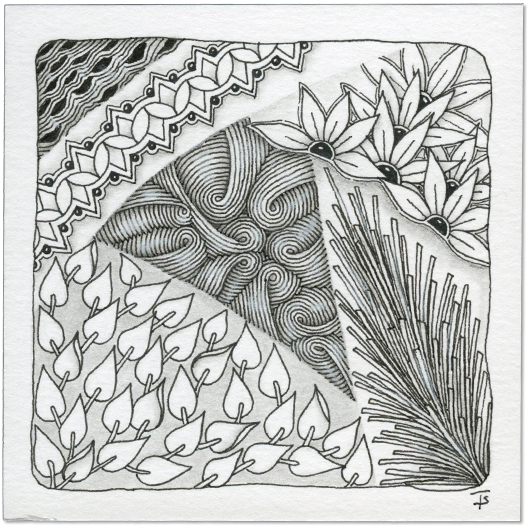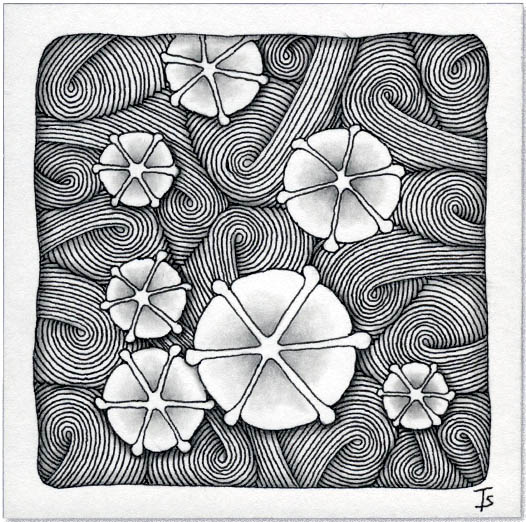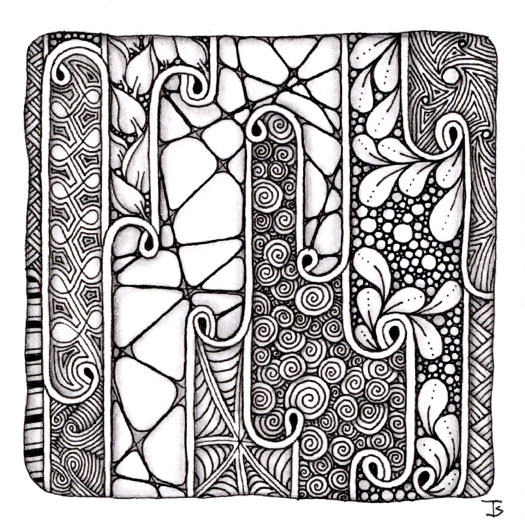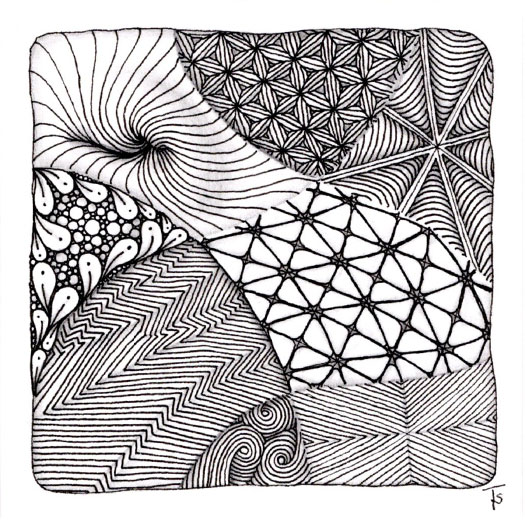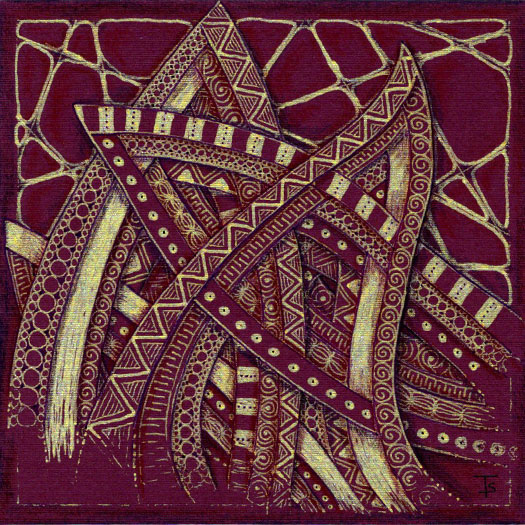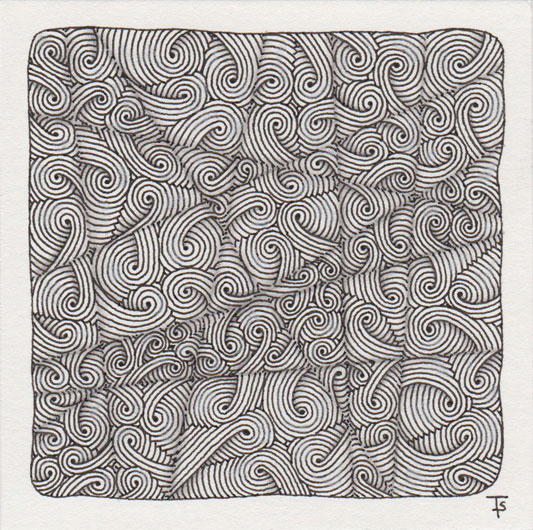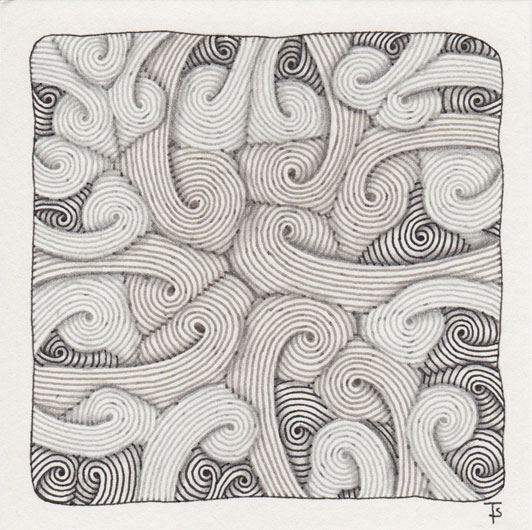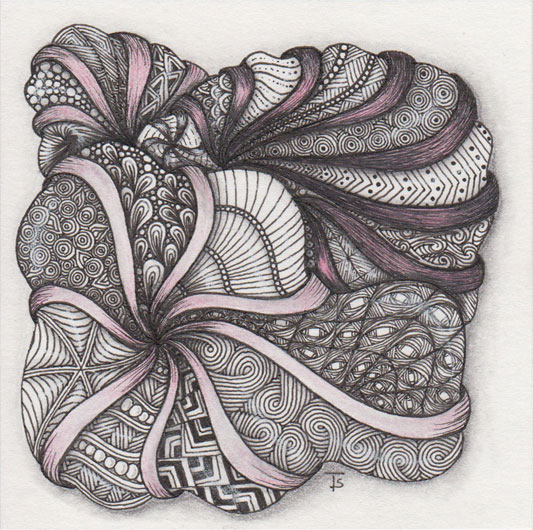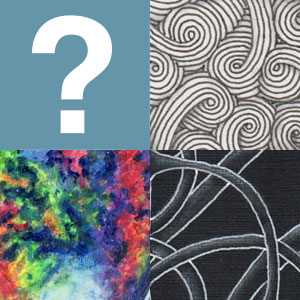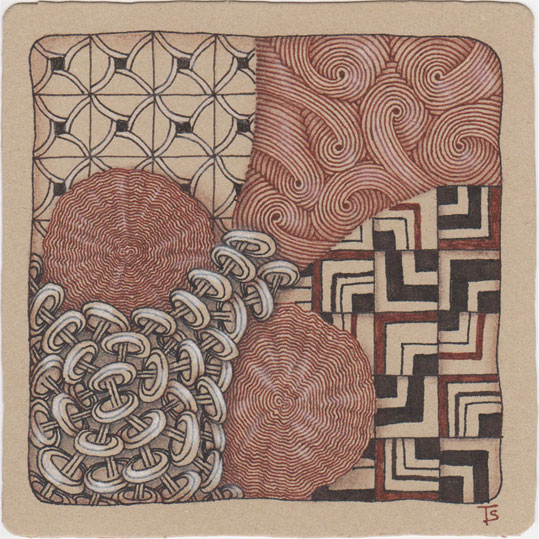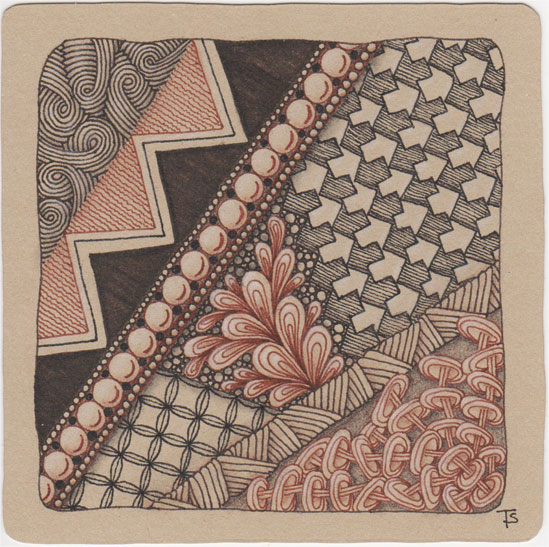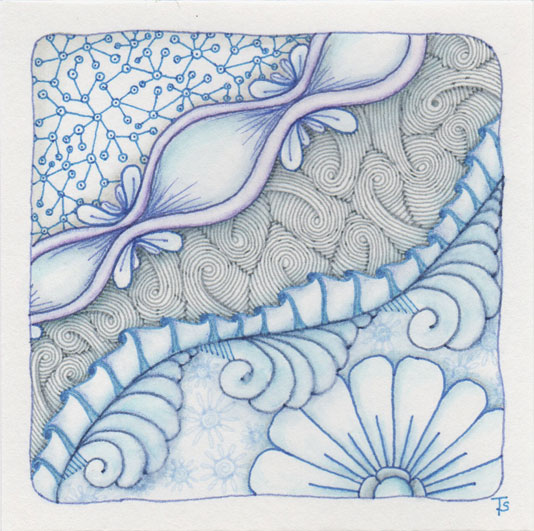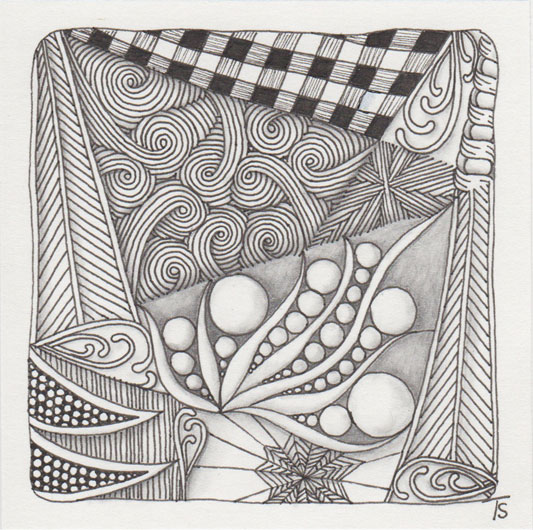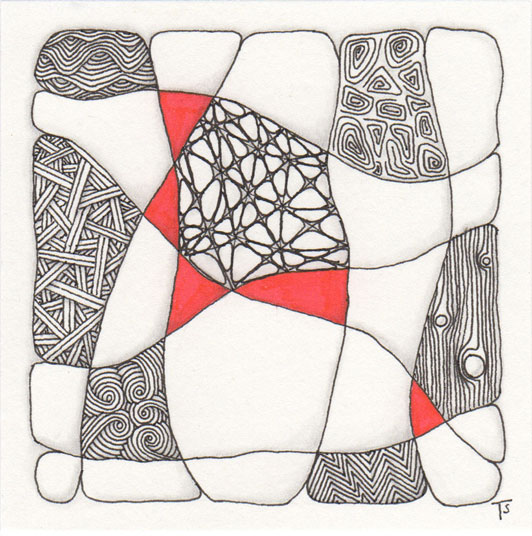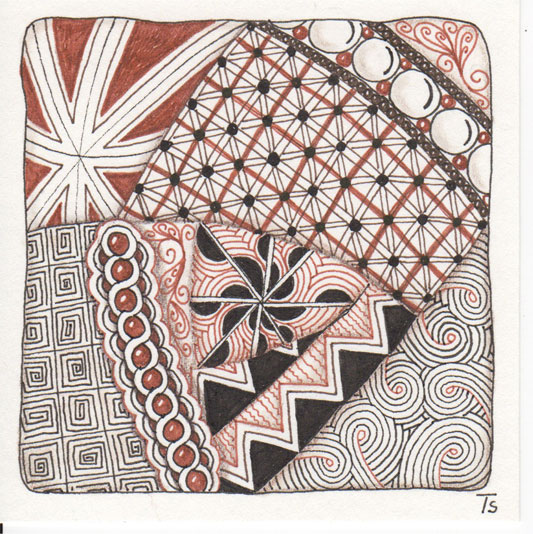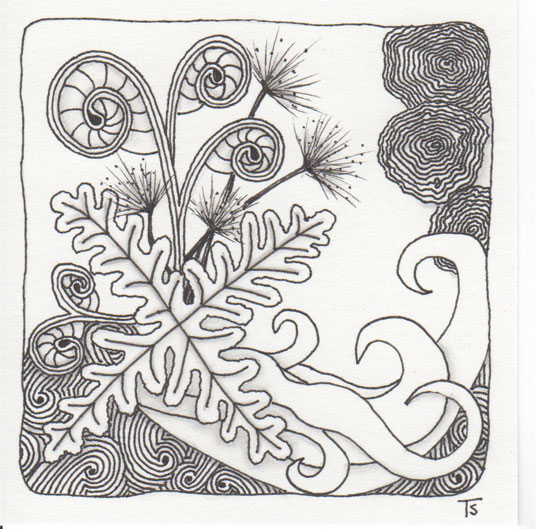Random string. Random and selected tangles.
This tile started with the string. When it was drawn, I really hoped I got a tangle from the random draw that would fit well in that ribbon area at the upper right. I didn’t, so I decided to put Zenith there.
Other than that, the rest of the tangls here appeared in the random tangle selection. I like the mix of botanical and line tangles. Some of these I haven’t drawn in a while, so they were fun to do. I particularly enjoyed drawing Petal Puddle!
Continuing a with a bit of ocean theme.
I learned this version of Tripoli from watching a video in which Martha (from Zentangle) described taking her children to the local aquarium and watching the jelly fish. While these don’t look exactly like them, it does invoke the feeling of moon jellies!
I chose the Sand Swirl tangle for the background to act as a contrast to the individual motifs.
Melting Mooka, introduced to us by Zentangle's Project Pack #6 , is a wonderful version of Mooka that can be used to as a string to divide a tile into smaller spaces.
These internal sections, when filled with other tangles, result in a tile that gives the impression of stained glass windows.
This was a fun, playful exercise!
Zentangle drawn on Strathmore Vellum Bristol using a black, Micron pen. Shading done with graphite pencil.
My random tanglizer spit out a lot of tangles for practicing line work yesterday. At first, I was a bit worried that these wouldn’t produce enough contrast. But after using my magic wand (actually, a pencil), I like the way they became distinct and unique!
Zentangle drawn on Strathmore Vellum Bristol using a black, Micron pen. Shading done with graphite pencil.
Tangles: Fassett Flux Fracas Nzepple Sand Swirl Static Tipple Xircus
Finally, a gold and maroon tile from Eni Oken's Crazy Gold Auraknot lesson.
While I liked the idea of this, it turned out harder to do than it looked. I found that the widest marking gold pen that I had was kind of sketchy when used to fill in the solid ribbons. On the other hand, I found one with a very fine line that I liked along for creating the patterned details.
I am still working on my project from this week. I’m sure most of you have figured out what I’m making, but just in case you haven’t, today I’m posting something totally different.
This monotangle of Sand Swirl was fun to do. Sometimes it’s very calming to just draw auras!
I will be showing you my project towards the end of next week (I hope,) and you’ll finally get to see all the tiles put together, so stay tuned!
Swirls.
Am I looking down at a carpet? A muddy river? Foam at the edge of a wave on the beach? It’s an interesting, visual mystery!
Sand Swirl is one of my favorite tangles to draw. It’s simple echoed lines allow your mind to enter the Zen zone quickly. Here, I used three different colors of ink to give the tile more depth and dimension.
Zentangle drawn on Strathmore Vellum Bristol using a black, Micron pen, warm grey and cool grey Copic Multiliner. Shading done with graphite pencil.
Tiny details.
This tile is a result of Eni Oken’s Tiny Details Lesson . This excellent video shows you exactly how to create and shade areas of a tile which include little, tiny detail drawings which can be a major challenge to shade!
I love tiny drawing and repetitive patterns that are very close to each other. There is just something really soothing and satisfying about filling predefined areas with tangles like these, making this tile lots of fun to create.
For this week’s Music Monday, I wanted to show you how different various types of tangling sound compared to each other. I chose three examples that have unique characteristics.
Additionally, there will be two musical systems for each of the examples. Under each image there are two “play” buttons. The one on the left, labeled “Rhythmic” refers to the musical system you heard last week, in the “ What Does A Zentangle Sound Like ” post.
Renaissance.
I really enjoy tangling on the Renaissance Tan tiles. Just as with the grey-toned tiles, it is possible to achieve a wide range of values. And then, with the addition of brown and sepia ink you can just go even further developing the design! The final piece can look antique, native american, or fresh and modern.
Zentangle drawn on Official Renaissance Tan Zentangle tile using a black, brown and sepia Micron pens. Shading done with graphite, colored and white charcoal pencils.
Graphic.
I love this paper! Using a tan paper allows me to add both high and low lights to the various designs. In addition, this combination produces a very graphic effect.
I bought a large sheet of this paper for a few dollars and cut out my own “tiles. This makes using the paper very affordable.
Zentangle drawn on BFK Rives tan print making paper using brown, sepia and black Micron pens. Shading done with Polychromos and Crayola colored pencils.
Blues.
This tile was inspired by delft blue china pieces. It didn‘t actually turn out the way I hoped, but it‘s interesting in it‘s own right. It was fun experimenting with all the different shades of blue, and the Sand Swirl in the center makes a distinctive contrast with the rest.
Zentangle drawn on Strathmore Bristol Vellum using a variety of markers with blue ink. Coloring done with Tim Holtz Distress Inks and Poloychromos colored pencils.
Many.
There are a lot of tangles on this tile. That‘s because I used a string that had many “sections”. But I think it still works because I repeated a couple of the designs and also used a central, bold tangle. Those framed and anchored the whole thing.
Zentangle drawn on Strathmore Bristol Vellum using a black Micron pen.
Tangles: Afterglow Coil coral Seeds Floating disks Gingham Hurry Mooka Papyrus Sand Swirl
Neuron was recently featured as the challenge tangle on a couple of Facebook groups. I didn‘t do this right away, because I wanted to think about how to use the tangle as a string, as I did here. I also wanted to experiment with a few red accents, and I thought the triangles that appear in this design were perfect. I felt the center needed something contrasting, so I chose Nzeppel. Finally, I specifically chose the tangles to go into the other filled spaces so that there were a lot of close line work. It‘s kind of unusual for me to select specific tangles and here, I feel like everything worked very well.
Sometimes I think of arranging tangles on the tile kind of like flower arranging. I didn‘t really draw a string on the tile for this, instead, I had the concept of mixing the Thanksgiving and B‘Dylan together in a bouquet. But then I had to do something with the other random tangles, so this is the end result.
Zentangle drawn on Strathmore Bristol Vellum using a black Micron pen.
